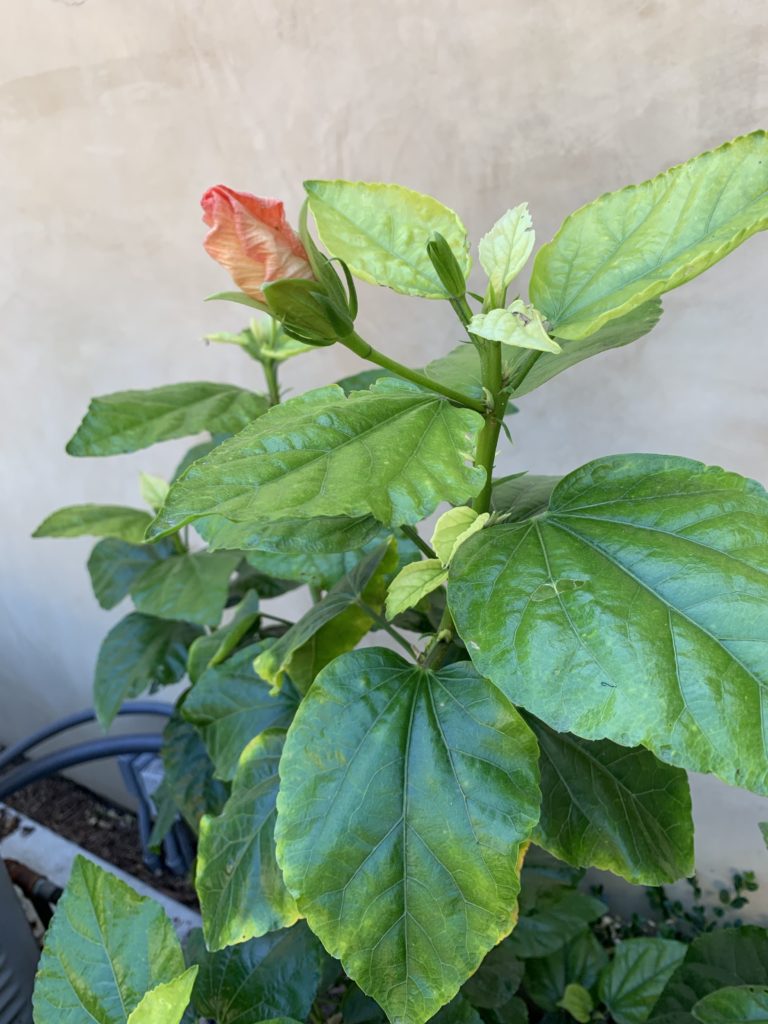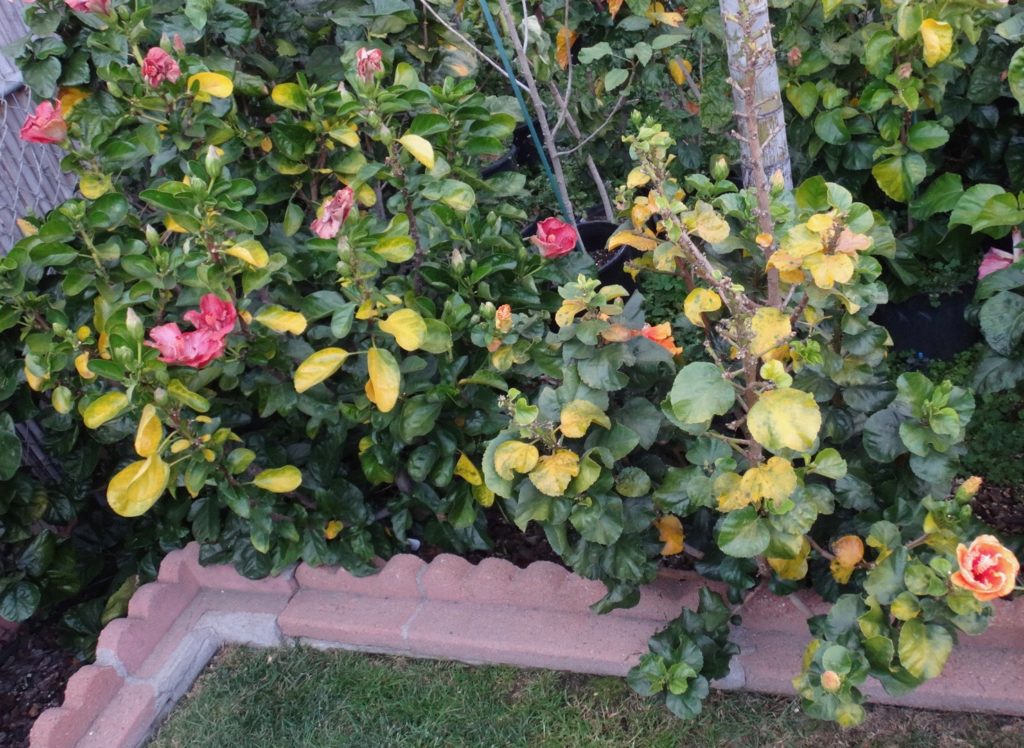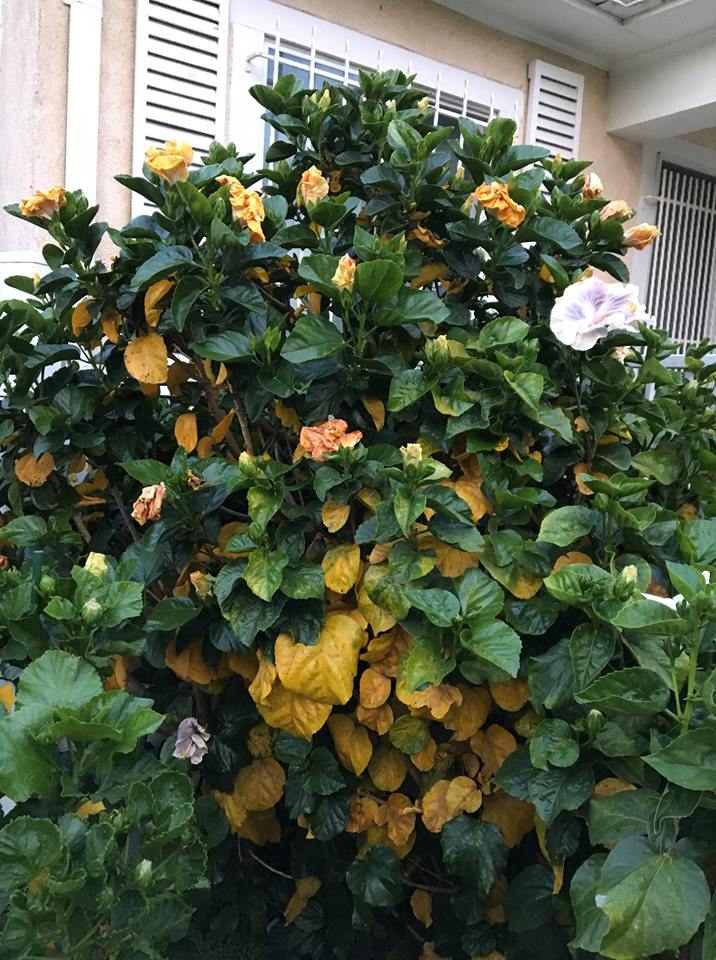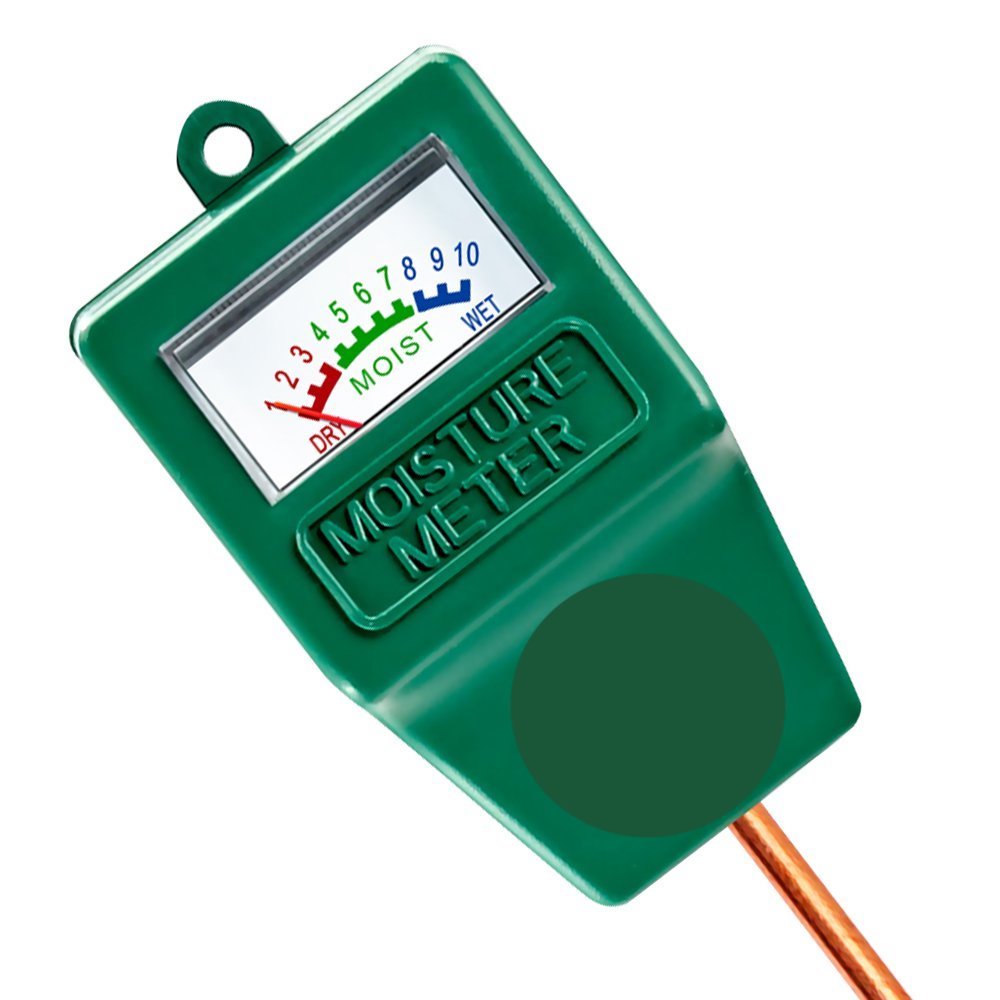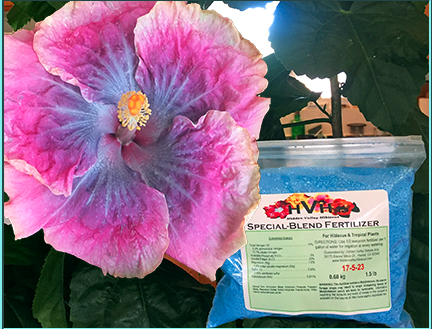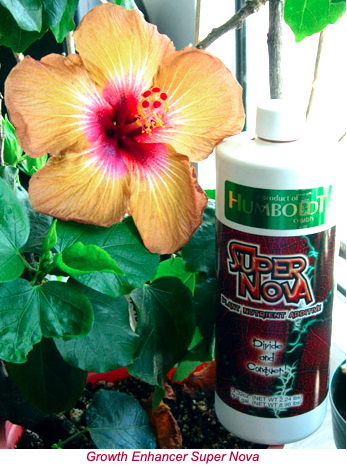Common Mistakes
Pale or Yellow Leaves Do Not Mean There is a Nutrient Deficiency
One of the most common problems growers of hibiscus encounter is when their hibiscus get yellow and/or have pale and veiny looking leaves. We have observed that experienced plant growers are especially vulnerable to going down the wrong path of treatment when they see this on a hibiscus plant. This is due to their success with treating other plants with the same look but the causes are totally different as hibiscus have much different needs than most other flowering plants.
When you see pale and/or veiny leaves on a hibiscus plant that is an indication that the soil does not have enough air in it for the roots. This means that adding additional water for a nutrient supplement like iron for instance is the worst possible thing you can do to your hibiscus plant as the additional water will further depleted the soil of the much needed oxygen for those tender hibiscus roots. Experienced gardeners are familiar with how other plants that show pale leaves typically means there is a nutrient deficiency such as a lack of iron or magnesium and adding a supplement is an easy and correct action to take. Unfortunately hibiscus plants are unique in that they only require nutrients like iron, magnesium, etc… in trace amounts.
We commonly see many hibiscus growers become panicked when their hibiscus plant develops pale and veiny leaves which starts at the top leaves and will expand down over time if the soil does not have a chance to dry out and regain the air it normally has. Many times the culprit is the wrong type of soil mix, a pot that doesn’t have sufficient drainage capacity and/or overwatering from sprinklers or growers overreacting to hot weather conditions. Many times they will get advice from respected plant growers that see those pale leaves and quickly make the assumption of nutrient deficiencies without knowing that hibiscus are different in their needs compared to other plants. So the correct course of action is to investigate the soil’s water density (water meters are great) and then making adjustments to help introduce more air back into the soil. Many times that just means to be patient, stop whatever is adding water to the soil or prohibits it from properly aerating to keep the healthy balance of air in it. It will take a minimum of 2-3 weeks to start seeing changes in your hibiscus plant and for those leaves to either green up again or for new leaves to replace the current pale ones.
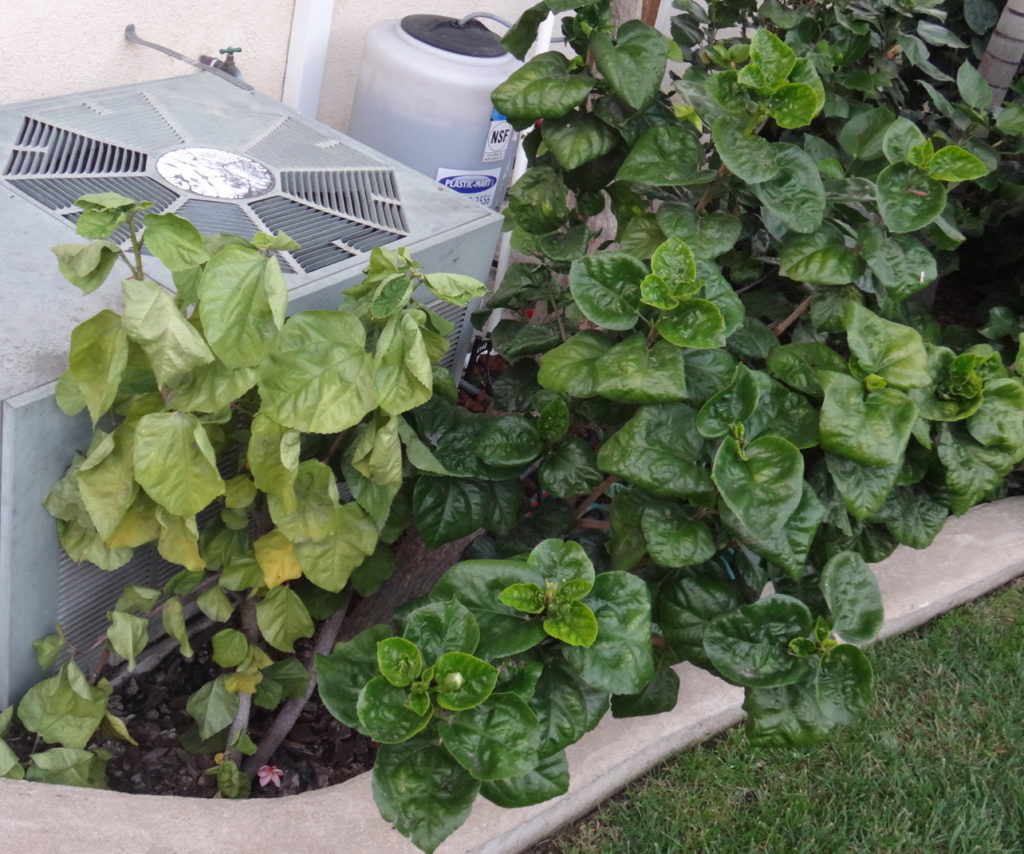
Hibiscus are some of the most hungry plants you will come across. But their nutrient requirements are not like most flowering plants. They require vast amounts of potassium and indirect sun heat (ambient heat). Nitrogen is needed in medium to smaller amounts depending on how much heat they get (the less heat the more nitrogen they should get). The one that throws a lot of people off is phosphorus as most other flowering plants need large amounts of it but hibiscus don’t and start to do poorly with increasing amounts of it. What also throws growers off is that hibiscus also need elements like iron, magnesium, zinc, silica and copper but only in very small amounts which is why they are referred to as micronutrients. Don’t waste your time and money buying supplements for these micronutrients as the amounts needed are miniscule. Again this is why we highly recommend the Special Blend Fertilizer from Hidden Valley Hibiscus. It is formulated just for hibiscus.
In the end hibiscus are heat lovers but have a narrow range of what they can tolerate which is 60F-93F. Below and above this and they start to have issues which can lead to the appearance of yellow leaves (direct sunlight over 93F is the problem, ambient heat can be much higher). Hibiscus plants can get yellow leaves for a variety of reasons. Yellow leaves can appear every spring when your hibiscus plant loses the previous years’ leaves for new one which is a good thing. Yellow leaves can also appear when your hibiscus experiences rapid and drastic changes in the weather, direct sunlight over 95F and pests like spider mites and white flies can cause them too as they feed on the chlorophyll in the leaves.
Reacting Instead of Carefully Observing and Adding Together Clues Before Acting
Hibiscus are not like most plants where when something starts to go wrong it can be fixed by quickly introducing certain nutrients or pruning down the plant for a restart. Patience is by far the most important skill to have when it comes to problem solving and nurturing your hibiscus plant back to it’s optimal state. Think of it like learning a second language. Hibiscus show subtle clues so you need to take your time and look for them you will start to see indications that lead you in a direction of what a cause to your problem might be. You have to put on your detective hat and piece together multiple signs to get to the truth. Ironically we find the growers that struggle the most with hibiscus are those that are expert growers with other species of plants. They are used to being able to quickly identify the causes of ailments and know from years of experience what is needed to correct the problem which usually means adding or rebalancing nutrients for a plant.
With hibiscus the most common cause of problems is not enough air in the soil and/or the wrong type of fertilizer. The problem here is before you can address the nutrients issue you must first be patient and wait until the soil regains the air in it. Hibiscus roots are very fragile roots compared to most plants as their origins are in volcanic rocky soils that naturally have abundant air and easily percolate water through even after heavy rains for a quick rebound of air. Most soils elsewhere do not do this and their roots are not designed for low levels of air.
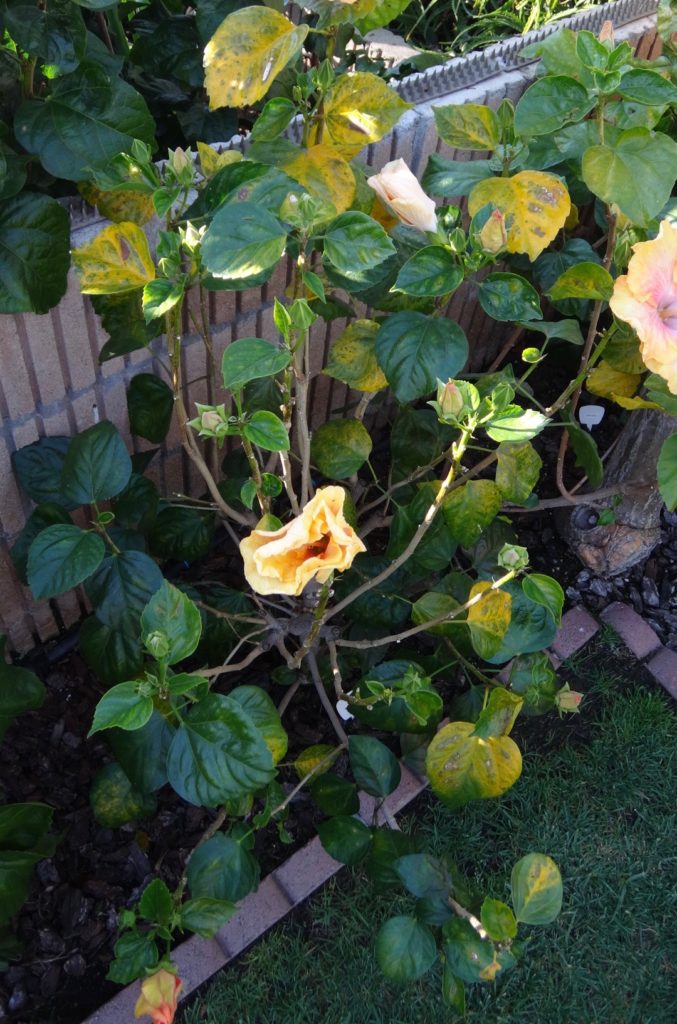
Here is an example where many growers see yellowing leaves and quickly react thinking there is an iron deficiency which means more water to this plant with an iron supplement. There real problem here was there was a heat wave 2 weeks prior so the plant is reacting by shedding leaves (already has lost half it’s leaves) when under stress. The addition of water with much less leaves means the soil will become saturated (it cannot transpire the water in the soil out through the fewer remaining leaves) and lose the much needed air for those tender roots. Root rot will set in next and you have a disaster on your hands. If you were tracking the weather you would expect the yellowing leaves a week or two after the heatwave and remove them knowing new ones will sprout in their place once your plant rides out the stress reaction. So really no action is needed beyond removing the yellowing leaves so this problem will eventually works itself out without any need for additional action.
An expert hibiscus grower will look for other signs in the above example to exclude other possible causes. If there is a root rot problem the top leaves would be veiny and pale and some branch tips would start to die back. If it is a pest issue like spider mites then the expert grower is checking the undersides of the leaves for evidence of spider mites like sticky residue, dirt, small webs and might even spot those almost microscopic mites running around. You have to run through your checklist of possible causes first and keep in mind you might have multiple problems at the same time. For instance heatwaves typically make spider mite populations explode so you should expect a double hit. Leaf loss from direct sun heat stress and then additional yellowing leaves from the spider mites as they quickly suck all the chlorophyl out of the leaves due to their population explosion from the heatwave.
Patience is Key to Success
Hibiscus operate on timescales that go on months if not a whole season. Being they are momentum plants they take several weeks to show the effects of inputs. But that is only half of it! For starters if something negative happens it will take three weeks for that negative to show up. Then after you address the problem and correct it it will take another three weeks on average just to get your plant back up to full speed again. That doesn’t mean it looks great and fine it means that it is now in a state where it can start to fully do the things it is meant to do. So that might take another 3-4 weeks to finally get your plant looking good again. Wait a second we just covered about 2 1/2 months for one problem fix. That right there can just about be a whole season like summer. What if your fix doesn’t work then you have to try something different. In the end it can take an entire growing season just to see if you figured out the right solution. This is where many new growers lose patience and rush things which quite often leads to disastrous outcomes for your hibiscus.
The hardest part is seeing your prized plant looking terrible and getting worse by the week. Expert hibiscus growers hate to see this but know to restrain themselves to reacting even though every fiber in our being says we got to do something now. A great example is when your hibiscus goes into total systemic cold shock. Many growers think since the plant is losing it’s leaves might as well prune it down too. That would be the same as amputating an arm when a person has pneumonia. Don’t give your hibiscus any additional negative hits when it is already in a weakened state. This can lead them down an unrecoverable downward spiral.
Soap/Detergent Products Are Not Safe For Hibiscus
This is an ongoing challenge to get the word out to all hibiscus growers that using any product with soap or detergent no matter how diluted is a disaster for hibiscus leaves. Simply put one of the things that soap and detergents are meant to do is break down any waxy substance. Did you ever wonder why healthy hibiscus leaves are shiny? That is a natural protective waxy coating they have on them that protects the leaves from pests and infections. By applying or spraying any soap product like insecticidal soap or a home made diluted detergent mix you are placing a substance that will start to break down and remove that protective waxy coating. Once this coating has been compromised pests can then easily gain access to the areas of the leaf that contain chlorophyl and it is a feeding frenzy at this point. Pests will then reproduce much more rapidly than normal with an easily accessible food source they don’t have to work hard for.
Just think of the areas where the wax has been removed and/or compromised is like an open wound that cannot close itself. This creates a fantastic opportunity for funguses and other pathogens to get inside the living tissue of the leaf and quickly infect it. If you have sprayed down your entire plant this typically results in most leaves being damaged not long after spraying. We have seen photos of plants eventually becoming completely defoliated after applying such products. There are much more safe and effective ways of dealing with pests and funguses on your hibiscus plants. For scientific research information on why using soap products on plants is not recommended: Univ of Florida Entomology & Nematology Results
Don’t Always Water More When It is Hot
Surprisingly the time of year we see the most root rot for potted hibiscus plants is in the summer. This is ironic as root rot is at it’s worst in cold and damp conditions which for Southern California is winter. A common mistake a lot of growers make is during hot stretches they will water their potted plants much more often and with more water. The larger the pot the more it retains water deeper down. Use a water meter and check the soil deep in the pot and you will be surprised how wet it will still be. The top layer of soil might be bone dry and gives the appearance your hibiscus needs water frequently but the trick here is to just hydrate that top layer of soil. Slowly probe down with your water meter to see where the soil starts to get wet again and gauge the amount of water accordingly. Also when hot your hibiscus’ metabolism will speed up and the normal levels of fertilizer will start to burn your plant as it uptakes water faster and faster. So reduce the amount of fertilizer by 25% for each 5 degrees over 95F. Over 105F just plain water will do. So in the end you need to check before assuming how much your potted hibiscus plant needs. Conversely for small potted plants like in a 4″ or 1 gallon pot they can completely dry out quickly during heatwaves not just from the heat but from that increased metabolic rate where your hibiscus is taking up water much more quickly. For basic care info & more: Hibiscus Care & Growing
Don’t Disturb the Roots
The most fragile and important part of your hibiscus plant are the roots. You should do your best to leave the roots alone as much as possible. That also means don’t plant more than one hibiscus plant in the same pot and don’t plant in ground hibiscus too close to each other. The roots that interact with each other will try to dominate each other until one is in trouble. Use the most gentle touch possible even if you are just potting up your hibiscus to a large pot. Exposed roots should never be exposed to direct sunlight or allowed to dry out.
The only time you should disturb your roots is when you have concluded you have root rot or your hibiscus is suffering and needs a root pruning (Root Pruning Video). If you need to bare root your plant to remove rotted roots wash them with a 10% bleach solution after pruning off any visibly rotted roots. This is a very traumatizing and risky move for any hibiscus plant and is a last resort move. Unfortunately root rot is many times fatal so there is no guarantee that this will work as pathogens once inside a plant are not removable. Surprisingly we see many growers take routine action with the roots of their hibiscus plants. There is not a more stressful thing to do to your hibiscus plant and this should only be done as a one time last resort action. For more info: Root Rot & Branch Tip Dieback
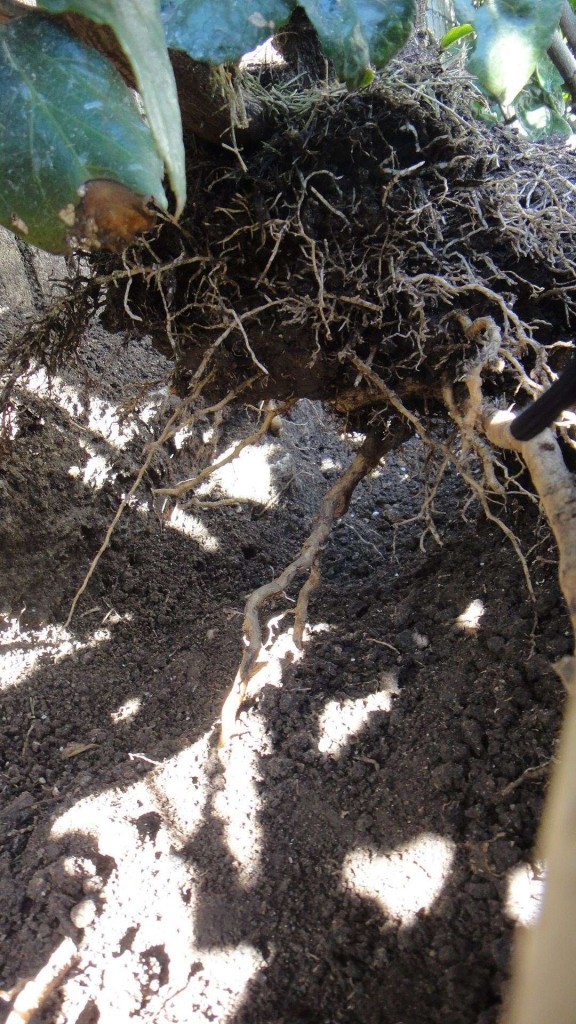
Hibiscus are White Fly Magnets
One of the most frequent complaints we get here in Southern California about hibiscus is that they are white fly magnets. The truth is they don’t get white flies much at all if they are frequently cared for the unique plants they are and not lumped together with other landscaping plants. When you give hibiscus plants the same inputs of other flowering plants or typical landscaping plants that usually means they are getting the opposite of what they really need. Too much water, wrong soil, wrong fertilizer, etc… And if you buy your hibiscus from big box stores or commercial nurseries the labels will state they are fine to grow in our climate with all the same inputs other flowering plants require. This is incorrect and only done for the sake of sales which is really a shame as hibiscus have gained a reputation of being a problem plant that are plagued by white flies. For more information about what to do with white flies and how to best prevent them: White Flies – Pro Grower’s Tips
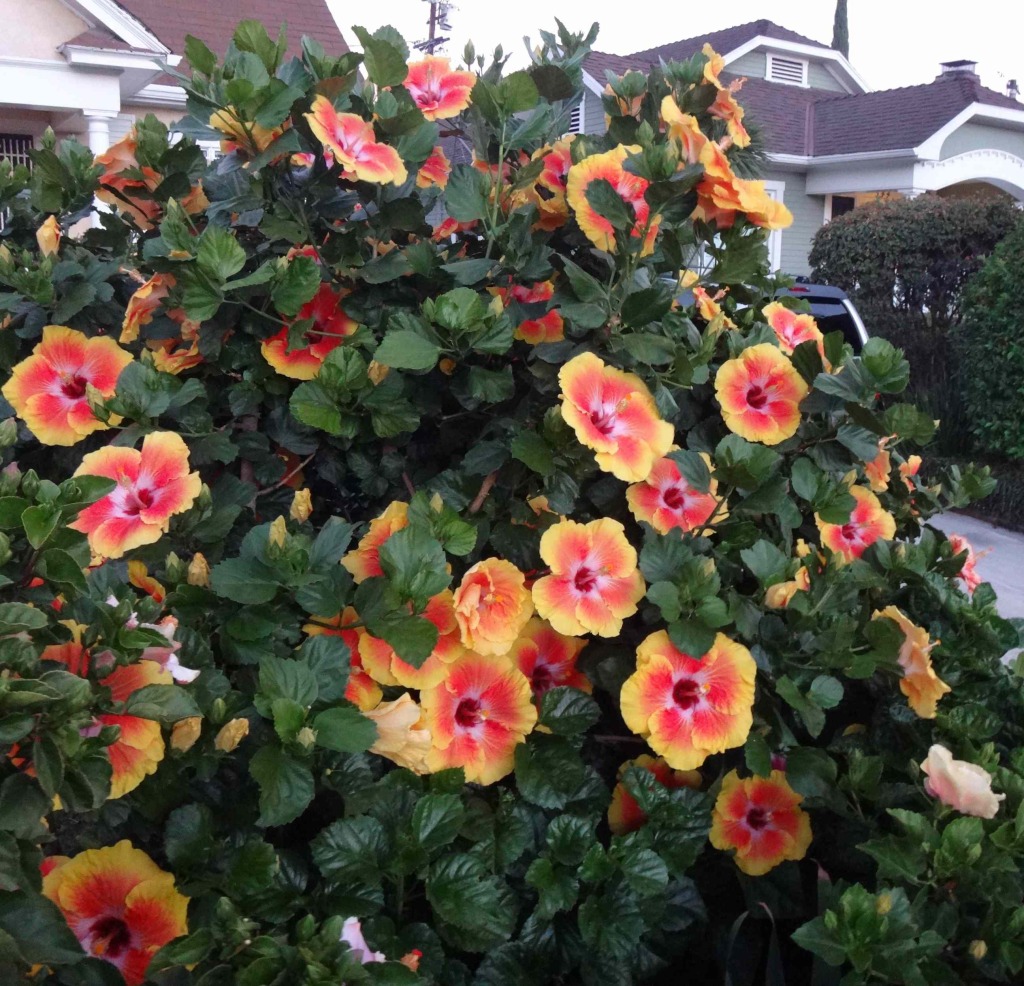
Hibiscus Don’t Need Supplements Like Iron and Magnesium
Hibiscus plants need three main inputs to flourish and bloom: heat energy (direct sunlight up to 93F), lots of potassium and abundant air in the soil at all times. They are not like the flowering plants that require plentiful amounts of potassium and need supplements like iron, magnesium, etc… We highly recommend The Special Blend Fertilizer from Hidden Valley Hibiscus which is formulated just for hibiscus plants. Not only does it have all the main nutrients in the correct amounts but it also has all the micronutrients needed to give them a complete nutritional package for optimal health. One important note if you feed your hibiscus a supplement like potassium nitrate remember that the salt (nitrate) in high levels can burn your plant. Same goes for nitrogen so that is why we recommend it in smaller amounts. A great way to add extra potassium to your hibiscus is to use a seaweed extract as those are full of potassium but won’t typically burn your plants. Our favorite we recommend is SuperNova Plant Additive.
Worm Castings and Composted Materials Create Major Problems
The problem with these two popular materials found in many of today’s soil blends is that when they get wet they become extremely heavy and lose all air. Hibiscus roots are very fragile and need lots of air all the time. We have seen mixed results with worm castings being an effective pest deterrent but if you insist on using some just sprinkle a little on top of the soil. It doesn’t take much for it to be absorbed by your plant.
There is no benefit to having composted materials in your soil mix for hibiscus. In fact if those materials are not properly prepared and treated before being added to the soil mix they can quickly cause nasty pathogens to grow in the soil and infect your hibiscus plant’s root system leading to the dreaded root rot. We have seen this happen to many of our members so make sure to read the label of your potting soil before using and don’t throw things like banana peels and the like onto the soil to decay naturally.
